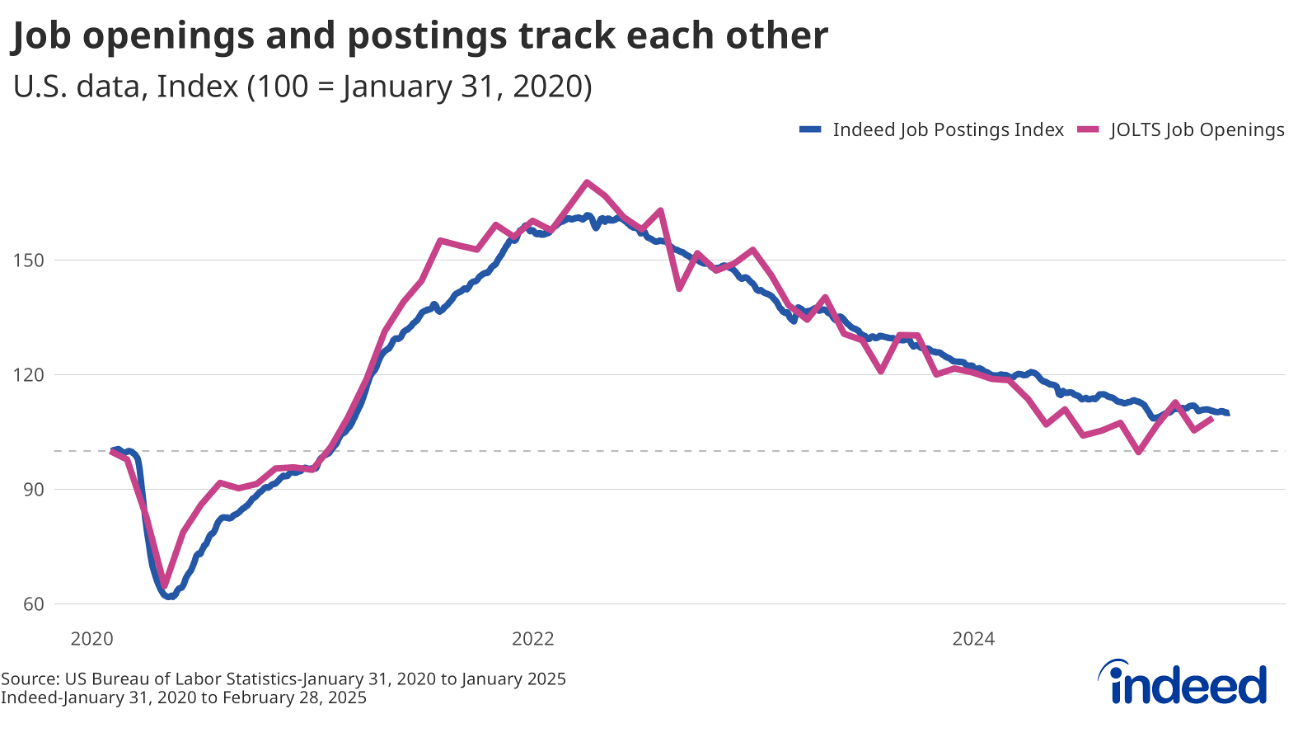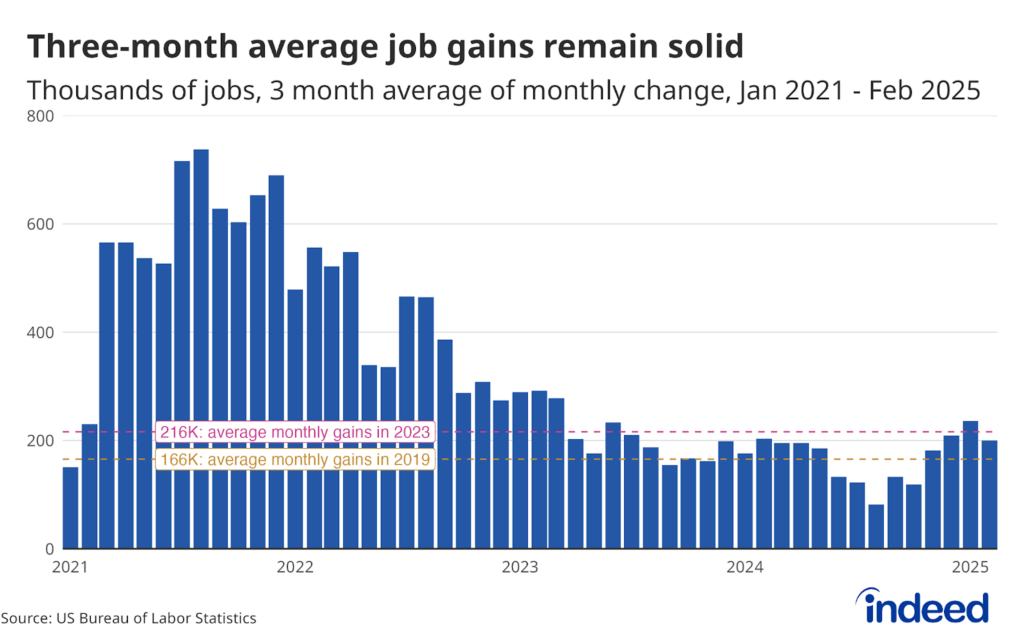Key Points:
- According to the Bureau of Labor Statistics, US job openings rose to 7.7 million in January, up modestly from 7.5 million in December.
- The number and rate of hires was unchanged in January, at 5.4 million and 3.4%, respectively.
- The backward-looking data in the January JOLTS report may not adequately capture the impacts of more recent volatility and policy changes that occurred in February and early March.
Today’s January JOLTS data is a bit of a time capsule that does not adequately capture the fast-moving nature of the new administration and the uncertainty that has marked much of February and early March. This data paints a picture of stability and steadiness that could be read more accurately as paralysis or fear of overcommitting to large, strategic hiring plans as the details of various policy pronouncements and their potential impacts remain out of focus. Forward-looking indicators, including the Indeed Job Postings Index, show that demand for workers, while still comfortably above pre-pandemic levels, has fallen noticeably since the start of the year. A job market freeze in the face of mounting volatility is its own kind of stability, but the longer the market remains frozen, the more it risks contracting hypothermia and losing the ability to heat back up again in the future.
The Indeed Job Postings Index has historically tracked government job openings data well, but provides a much fresher look at recent trends. Since the beginning of the year, the Indeed Job Postings Index has dropped by 1.7 percentage points, an early indicator that the stability the Index has enjoyed since mid-2024 may start to roll over into steadier declines going forward.
If and when the market begins to thaw, we should expect one of two scenarios: An adjustment period that ends relatively quickly and smoothly, with disrupted workers resettling into new roles and employed workers re-gaining confidence in their ability to quit and quickly find a new role. Or a period of volatility that is slower-moving and feeds on itself, denting worker and employer confidence and potentially pushing up layoffs and unemployment.



